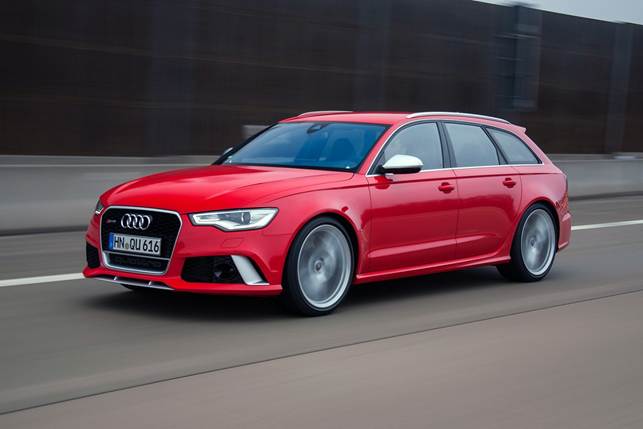Few cars are as easy to own as an Audi RS6,
providing your pockets are deep enough. Big bills are part of the territory,
but as long as you can afford them you’ll find this estate is an utterly effort
less way of going very quickly – pretty much whatever the weather.
Indeed, during the six months with our RS6
I frequently found myself wishing that it would show more evidence that it
enjoyed making faster progress – that the steering had more feel, the throttle
a bit more finesse; that the car’s limits were graded in grey rather than the
black and white of its chassis’ dedication to total adhesion. But I’d also be
lying if I didn’t admit the Audi’s no-non sense warp-speed approach didn’t go a
fairway towards winning me over as well. As a genuine, paid-for RS6 owner said
tome, at the sort of track day where everything arrives on a trailer: ‘If
you’ve got one of these then you’re going to have something more interesting as
well. Probably lots of more interesting something.’

As
a throttle and brake hot-rod, hot-wired to a guffaw and a head shake, the RS6
stands alone
Just as well, because the RS6 definitely
isn’t a track star itself. At the Bedford Autodrome the 552bhp 4-litre
twin-turbo V8 felt almost as prodigious as it did on the road, but the rest of
the experience stayed distant and aloof. The steering never lost its artificial
feel and the chassis’ enormous adhesion foiled my best attempts to play at the
limit of grip. After five laps the brakes and tyres were properly cooked, with
the former developing a low-speed squeak that remained throughout the car’s
time with us, and a disintegrating tyre resulting in a $640 replacement.
On road, the RS6 was always mighty: safe
and composed when you wanted to travel quickly, but also impressive when stuck
at everyday speeds thanks to compliant suspension and a well-finished cabin
packed with toys. As our RS6 had a previous life on Audi’s press fleet we
didn’t get to spec it, and it’s fair to say that many of the extras seemed to
be along for nothing more than the ride. The options I’d tick again would be
the 21in alloys ($3,250) and the carbon styling package ($7,275), which
includes the ‘quattro’ branded front grille. The Bang & Olufsen Audio
sounded brilliant, but I struggled with its $10,785 price tag. I’d avoid the
night vision ($2,585), head-up display ($2,120) and the ‘Dynamic’ pack, which
raises the speed limiter to 174mph ($3,860). Adaptive cruise was useful, but it
feels wrong to be charged $3,860 for something that’s standard on a mid-spec VW
Golf these days…

The
A6’s interior is a couple of years old now, but you wouldn’t know it
Depreciation was predictably steep, with a
tame Audi dealer bidding just $140,375 on the RS6 as a trade-in, against the
optioned new price of $172,935. But other running costs were surprisingly
light, with no scheduled servicing or notable faults to report. Fuel economy
varied dramatically according to use. Driven gently, the big V8 was remarkably
frugal and a couple of longer journeys showed the trip computer reporting over
27mpg. But enthusiastic progress sent the figure tumbling into the mid-teens.
Overall we averaged 22mpg, which is still an improvement on the 18.9mpg Harry
Metcalfe got from the previous-generation RS6 he ran back in 2012.

Twin-turbo
V8 provided an immense shove by way of compensation
The RS6’s extra width takes some getting
used to, with anything less than an A-road feeling quite narrow when you face
oncoming traffic. The wide flanks also seemed depressingly easy to scrape,
picking up a couple of parking dings in our time together. Those vast alloys
also seem to scuff easily and the car went back to Audi with two serrated rims
(sorry).
Overall, I liked the RS6. It’s the sort of
car you can fill with passengers and luggage and drive flat-out across Europe.
But if i owned one, I’d need to have something more interesting as well.